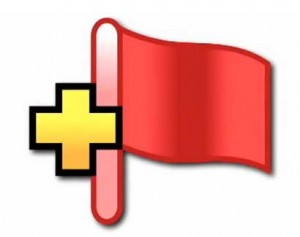 It’s now my pleasure to fill our readers in on a great recently published piece by my fellow Culture Digitally co-founder Tarleton Gillespie and our community’s friend and colleague Kate Crawford, from Microsoft Research’s Social Media Collective. Their article is titled, “What is a Flag For? Social Media Reporting Tools and the Vocabulary of Complaint” in New Media & Society (2014). The journal version is here (subscription to New Media and Society is required) and a pre-print version is here (no access barrier). It’s a timely and thoughtful contribution at a moment when social media platforms solidify their place as arenas for public discourse and civil society. The article’s abstract is below:
It’s now my pleasure to fill our readers in on a great recently published piece by my fellow Culture Digitally co-founder Tarleton Gillespie and our community’s friend and colleague Kate Crawford, from Microsoft Research’s Social Media Collective. Their article is titled, “What is a Flag For? Social Media Reporting Tools and the Vocabulary of Complaint” in New Media & Society (2014). The journal version is here (subscription to New Media and Society is required) and a pre-print version is here (no access barrier). It’s a timely and thoughtful contribution at a moment when social media platforms solidify their place as arenas for public discourse and civil society. The article’s abstract is below:The flag is now a common mechanism for reporting offensive content to an online platform, and is used widely across most popular social media sites. It serves both as a solution to the problem of curating massive collections of user-generated content and as a rhetorical justification for platform owners when they decide to remove content. Flags are becoming a ubiquitous mechanism of governance—yet their meaning is anything but straightforward. In practice, the interactions between users, flags, algorithms, content moderators, and platforms are complex and highly strategic. Significantly, flags are asked to bear a great deal of weight, arbitrating both the relationship between users and platforms, and the negotiation around contentious public issues. In this essay, we unpack the working of the flag, consider alternatives that give greater emphasis to public deliberation, and consider the implications for online public discourse of this now commonplace yet rarely studied sociotechnical mechanism.